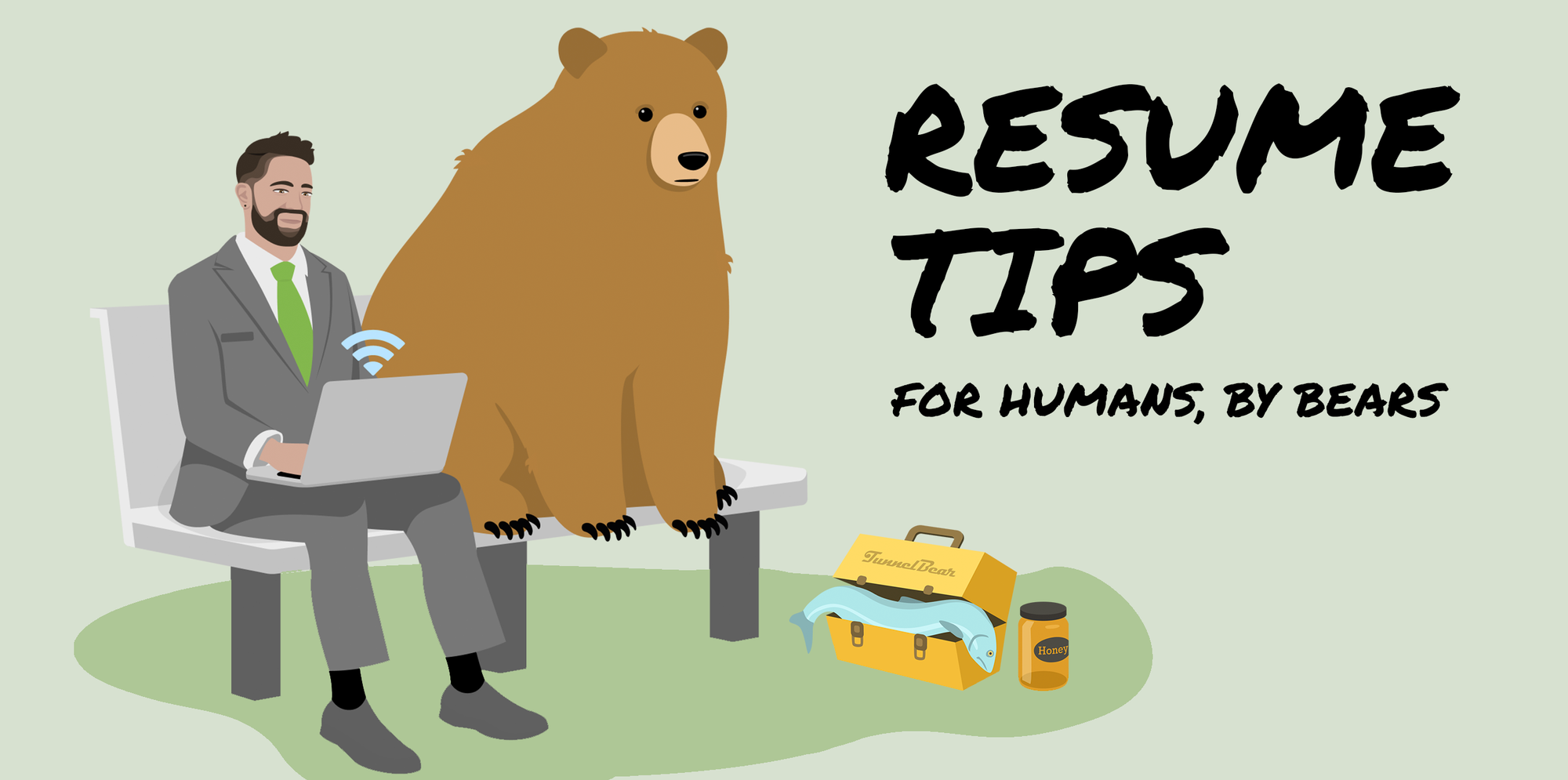Resume Tips
One of the first things to think about when starting the job hunt is fixing up your resume. Our Bears have collected some of their favourite tips on how to create a resume that will get noticed and help you get that call back.
How to pass the "6-second test"
For smaller organizations, the hiring committee may be free to dedicate up to a few minutes per candidate. However, companies with larger candidate pools may need to spend as little as 6 seconds per resume. This is a very short amount of time to leave a good first impression, so you'll want to make sure your biggest selling points are visible at a glance. Generally, the more relevant the information, the more visible you should make it. You can do this by moving that information closer to the top or by bolding specific keywords. You can also achieve this by including a short summary that describes your experience with the desired skills. Always remember to tailor your resume to the position you're applying for.
Do not make your resume too long. Popular advice says to add a new page for every 10 years of work experience. If you have less than 10 years of experience, try to make your resume a one-pager.
Here's further advice on how to pass the 6-second resume test.
Double-check the details
After completing the first draft of your resume, get someone to proof read for clarity, spelling and grammar. Studies show that our brains default to what we remember writing over what we see on the screen during proof reading, making it difficult for us to catch our mistakes. A second pair of eyes will help catch any errors and keep your resume looking professional.
Ensure your personal details are correct, such as phone number and email address. You'll miss many opportunities if prospective employers can't get in contact. Your email address should also be up-to-date and sound professional.
grizzle_pizzle_1992@hotmail.com should be swapped out for grizzly.bear@gmail.com.
As you modify existing cover letters or resumes for different applications, make sure you have updated all the areas that reference details about the company. "BearCorp" doesn't want to see a reference to "Salmazon" while reading your pitch.
Be specific
Vague words like "collaborate", "self-starter", "dynamic" do not get noticed. They are included on any generic resume, and are also very difficult to prove as an applicant. Think of it like SEO for your resume. Keywords, keywords, keywords!
For example, include the names of languages, frameworks, or workflow tools that you know or have experience with. Highlight the ones that were specifically mentioned in the job posting you are applying to.
SQL, Python, catching salmon, Javascript, eating blueberries, Git, etc.Quantify your achievements
When describing your past employment history, include a list of 4-6 things you did to improve your skillset and provide value. Where possible, quantify your achievements with hard numbers, like dollars or percentage changes. For example, "I increased blueberry collection by 15%, which prolonged the sleuth's hibernation period by 5 full days," helps highlight the value brought.
However, while trying to quantify your skillset, avoid arbitrary measures. For example, "My tree-climbing skills are an 8/10," is not helpful as the range is undefined and subjective.
If you want to highlight a particular area of expertise, you're better off listing the time spent working with the technology. Though, it is acknowledged within the industry that time does not always correlate to proficiency.
General formatting tips
As you style your resume, be sure that you stay consistent throughout your document. Here are some general rules to follow:
- Stick to one or two font families. For example, one font for titles and another for the content.
- Choose fonts that are easy to read at a glance. Cursive or calligraphy fonts may be beautiful, but are not practical on a resume. Sans-serif fonts are easier to read on backlit displays.
- Stick to two or three font sizes. Make sure your titles and content are clearly defined from one another.
- Ensure there is enough white space between your content blocks as to not have the document feel cluttered and difficult to parse.
- Save your resume in PDF format so it is easily accessible. A PDF, in contrast to a Microsoft Word format, will have consistent formatting across all computers. Save the file with your first and last name:
Grizzly.Bear.Resume.pdf - Avoid including large, distracting graphics.
Avoid bias, without sacrificing who you are
- Do not include a portrait photo. Your physical appearance doesn't indicate whether you qualify for the job. At worst, a photo could invite unwanted biases.
- Avoid including your year of graduation on your resume unless you’re applying for a co-op opportunity. This could open the door for age bias.
A note on cover letters
Cover letters in tech are generally not needed. It is helpful to include one, but only if it is tailored towards the job. It is actively detrimental to have a cover letter if it is not modified to fit the position you’re applying for. Cover letters are also useful for when you are new to the industry or are looking at a position where you lack experience. It can help give you an edge if you have done the research and are passionate about the company. It also provides an opportunity to highlight your skills that are most relevant to the position.
Good luck!
Job hunting can be stressful and take time, so don't be discouraged if you don't hear back immediately. Keep getting your name out there and we hope these tips help you land that dream job.
Beast wishes,
The TunnelBear Team

